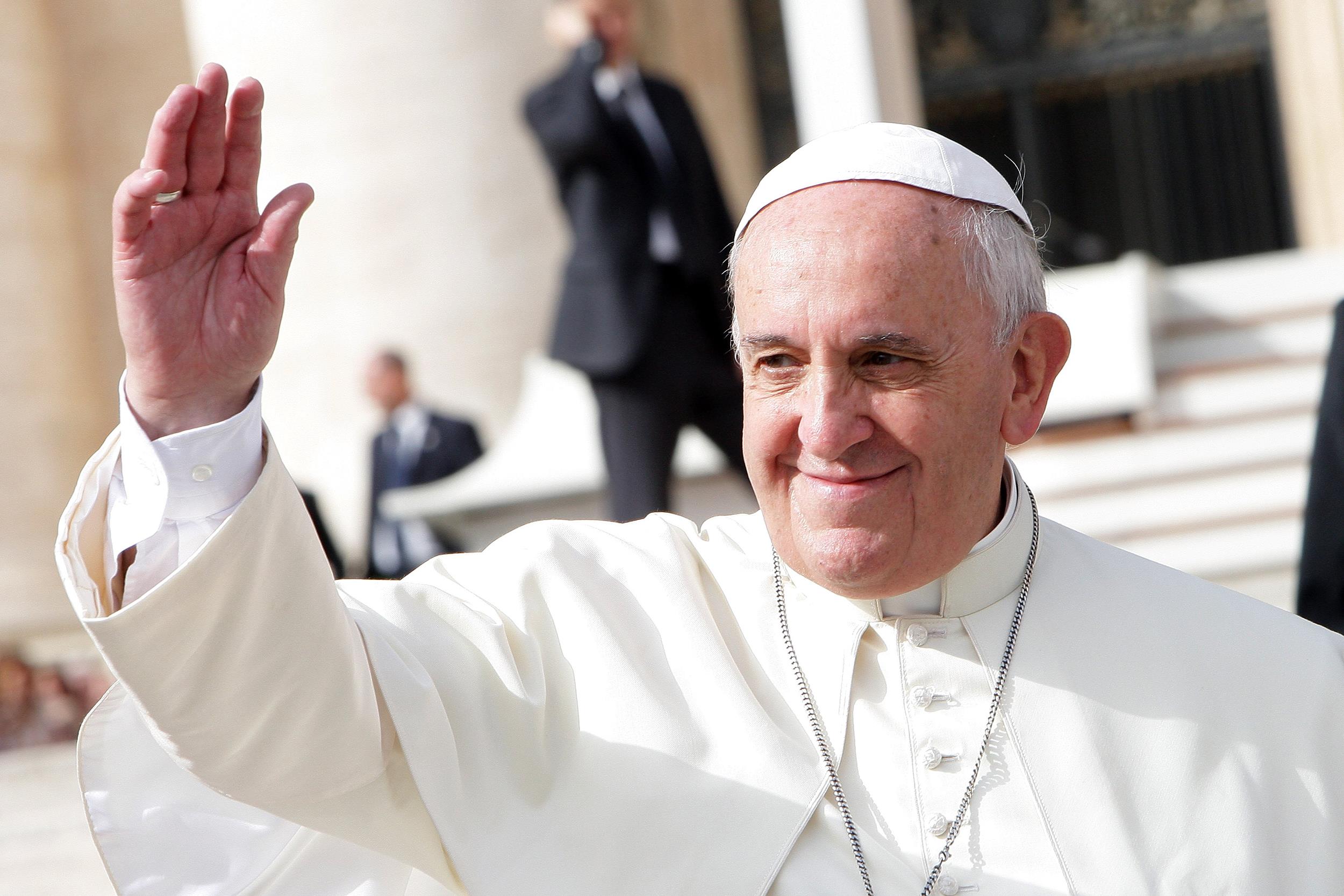
-
HOME
-
WHAT IS STANDOur Mission Our Values Our Help Contact
-
WHAT WE FIGHT FORReligious Freedom Religious Literacy Equality & Human Rights Inclusion & Respect Free Speech Responsible Journalism Corporate Accountability
-
RESOURCESExpert Studies Landmark Decisions White Papers FAQs David Miscavige Religious Freedom Resource Center Freedom of Religion & Human Rights Topic Index Priest-Penitent Privilege Islamophobia
-
HATE MONITORBiased Media Propagandists Hatemongers False Experts Hate Monitor Blog
-
NEWSROOMNews Media Watch Videos Blog
-
TAKE ACTIONCombat Hate & Discrimination Champion Freedom of Religion Demand Accountability
Pope Francis Fulfills Vatican’s Millennium-Long Pilgrimage From Antisemitism to Love
In 1555 Pope Paul IV ordered the Jewish neighborhood in Rome walled off from the rest of the city, with a single gate to be bolted every day at sundown. The Jews were ordered to pay the construction costs of their ghetto, were forced to wear identifying yellow hats at all times and were forbidden to engage in business dealings except for food and secondhand clothing. All synagogues, save one, were torn down. To disobey the order of a Christian meant severe—sometimes fatal—consequences for a Jew, often at the hands of a mob.

The ghetto lasted over 300 years, its walls finally torn down in 1888.
For over a thousand years, the relationship between the Vatican and the Jewish people has been, as some scholars euphemistically describe it, “volatile,” especially during long periods of persecution and abuse perpetrated by Christians on Jews. While there have been brief pockets where the Jews sought and found protection in the Holy See (Pope Clement VI, for example, issued two public decrees in 1348 defending the Jews against those who blamed them for the Black Plague), the religious hatred springing from the blaming of all Jews for the death of Christ persisted across time. The two communities thus found little common ground over the centuries.
“We are conscious today that many many centuries of blindness have cloaked our eyes so that we can no longer either see the beauty of Thy Chosen People nor recognize in their faces the features of our privileged brethren.”
It was not for want of trying. Beginning in 1145 and extending over the next four centuries, Rome’s Jewish community attempted to heal the breach, sending a delegation to meet the procession of each new pope.
They waited for him across the Ponte Sant’ Angelo, the bridge spanning the Tiber River across from the tomb of the Roman emperor Hadrian, the destroyer of Jerusalem who banished the children of Israel from that holy city.
Each time the new pope appeared there, the delegation would present him with a Hebrew Torah scroll along with a request for acceptance into the community, but every such gesture of friendship was rebuked. For 400 years, each new pope was given the chance to welcome—or at least tolerate—the Jews, and each new pope brushed it off.
The broken relationship reached its nadir during the Second World War when Pope Pius XII refused to denounce Nazi atrocities. The Vatican’s argument that the pontiff was unable to verify the information was recently discredited by newly discovered correspondence indicating that Pius did know about the Holocaust but remained silent.
The first real breakthrough between the Vatican and the Jews occurred 20 years later. Pope John XXIII, shortly before he died in 1963, issued a statement acknowledging the Church’s part in creating and continuing Christian antisemitism. “We are conscious today that many many centuries of blindness have cloaked our eyes so that we can no longer either see the beauty of Thy Chosen People nor recognize in their faces the features of our privileged brethren,” the document read. “We realize that the mark of Cain stands upon our foreheads. Across the centuries our brother Abel has lain in the blood which we drew or shed the tears we caused by forgetting Thy Love. Forgive us for the curse we falsely attached to their name as Jews. Forgive us for crucifying Thee a second time in their flesh. For we knew not what we did.”
The document—which John directed every Roman Catholic to read—marked a turning point in the relationship between Catholics and Jews. Historian Geoffrey Blainey states, “In the following forty years, Christians and Jews were to come together more closely than at perhaps any other time since the half-century after Christ had died.”
“Together with you, we, Catholics, are very concerned about the terrible increase in attacks against Jews around the world.”
The spirit of reconciliation grew into mutual respect. Curricula in seminaries and schools of theology now include more courses dealing with the Church’s relationship with the Jewish people and provide students a grounding of the history and traditions of Judaism, free from stereotypes and negative images.
So earlier this year, when another Jewish delegation—this time in the form of a letter signed by 400 scholars and rabbis—approached another pope, Francis, nearly a thousand years after the first, the reception was quite different.
The letter asked for the pope’s support and solidarity in a time of spiraling antisemitism.
In his response, made public on February 3, Pope Francis condemned hatred against Jews and Judaism as “a sin against God.”
The pope wrote, “The path that the Church has walked with you, the ancient people of the covenant, rejects every form of anti-Judaism and antisemitism, unequivocally condemning manifestations of hatred toward Jews and Judaism as a sin against God.”
After citing the special relationship between Christians and Jews, the pope went on to say: “Together with you, we, Catholics, are very concerned about the terrible increase in attacks against Jews around the world. We had hoped that ‘never again’ would be a refrain heard by the new generations, yet now we see that the path ahead requires ever-closer collaboration to eradicate these phenomena.”
Francis reassured the 400 signatories, “I want you to know that you are close to my heart and to the heart of the Church … I feel the desire to assure you of my closeness and affection. I embrace each of you.”
It took nearly a millennium, but it finally happened, demonstrating that hate can eventually transform into love.
How many more centuries must the open sores of religious hate in the world fester before they, too, begin to heal?









